1. Farid H, O’Connell T. Hepatic resections: changing mortality and morbidity. Am Surg. 1994; 60:748–752. PMID:
7944036.
2. Liu J, Zhang Y, Zhu H, Qiu L, Guo C. Prediction of perioperative outcome after hepatic resection for pediatric patients. BMC Gastroenterol. 2019; 19:201. PMID:
31775648.

3. Itoh T, Miyajima A. Liver regeneration by stem/progenitor cells. Hepatology. 2014; 59:1617–1626. PMID:
24115180.

4. Puglisi MA, Saulnier N, Piscaglia AC, Tondi P, Agnes S, Gasbarrini A. Adipose tissue-derived mesenchymal stem cells and hepatic differentiation: old concepts and future perspectives. Eur Rev Med Pharmacol Sci. 2011; 15:355–364. PMID:
21608430.
5. Baglio SR, Pegtel DM, Baldini N. Mesenchymal stem cell secreted vesicles provide novel opportunities in (stem) cell-free therapy. Front Physiol. 2012; 3:359. PMID:
22973239.

6. Filip S, Mokrý J, English D, Vojácek J. Stem cell plasticity and issues of stem cell therapy. Folia Biol (Praha). 2005; 51:180–187. PMID:
16419613.
7. Makridakis M, Roubelakis MG, Vlahou A. Stem cells: insights into the secretome. Biochim Biophys Acta. 2013; 1834:2380–2384. PMID:
23376432.

8. Kim KH, Lee JI, Kim OH, Hong HE, Kwak BJ, Choi HJ, et al. Ameliorating liver fibrosis in an animal model using the secretome released from miR-122-transfected adipose-derived stem cells. World J Stem Cells. 2019; 11:990–1004. PMID:
31768225.

9. Lee J, Choi JH, Joo CK. TGF-β1 regulates cell fate during epithelial-mesenchymal transition by upregulating survivin. Cell Death Dis. 2013; 4:e714. PMID:
23828577.

10. Deguchi M, Shiraki K, Inoue H, Okano H, Ito T, Yamanaka T, et al. Expression of survivin during liver regeneration. Biochem Biophys Res Commun. 2002; 297:59–64. PMID:
12220508.

11. Hagemann S, Wohlschlaeger J, Bertram S, Levkau B, Musacchio A, Conway EM, et al. Loss of Survivin influences liver regeneration and is associated with impaired Aurora B function. Cell Death Differ. 2013; 20:834–844. PMID:
23519077.

12. Park JH, Kim OH, Kim KH, Hong HE, Seo H, Choi HJ, et al. Isolation of secretome with enhanced antifibrotic properties from miR-214-transfected adipose-derived stem cells. J Korean Med Sci. 2019; 34:e273. PMID:
31760709.

13. Greene AK, Puder M. Partial hepatectomy in the mouse: technique and perioperative management. J Invest Surg. 2003; 16:99–102. PMID:
12746193.

14. Park MR, Wong MS, Araúzo-Bravo MJ, Lee H, Nam D, Park SY, et al. Oct4 and Hnf4α-induced hepatic stem cells ameliorate chronic liver injury in liver fibrosis model. PLoS One. 2019; 14:e0221085. PMID:
31404112.

15. Zhao Q, Zhou H, Liu Q, Cao Y, Wang G, Hu A, et al. Prognostic value of the expression of cancer stem cell-related markers CD133 and CD44 in hepatocellular carcinoma: from patients to patient-derived tumor xenograft models. Oncotarget. 2016; 7:47431–47443. PMID:
27329727.

16. Lee TH, Park DS, Jang JY, Lee I, Kim JM, Choi GS, et al. Human placenta hydrolysate promotes liver regeneration via activation of the cytokine/growth factor-mediated pathway and anti-oxidative effect. Biol Pharm Bull. 2019; 42:607–616. PMID:
30930420.
17. Altieri DC. Survivin, versatile modulation of cell division and apoptosis in cancer. Oncogene. 2003; 22:8581–8589. PMID:
14634620.

18. O’Connor DS, Grossman D, Plescia J, Li F, Zhang H, Villa A, et al. Regulation of apoptosis at cell division by p34cdc2 phosphorylation of survivin. Proc Natl Acad Sci U S A. 2000; 97:13103–13107. PMID:
11069302.
19. Ebrahimiyan H, Aslani S, Rezaei N, Jamshidi A, Mahmoudi M. Survivin and autoimmunity; the ins and outs. Immunol Lett. 2018; 193:14–24. PMID:
29155234.

20. Ito T, Shiraki K, Sugimoto K, Yamanaka T, Fujikawa K, Ito M, et al. Survivin promotes cell proliferation in human hepatocellular carcinoma. Hepatology. 2000; 31:1080–1085. PMID:
10796883.

21. Deveraux QL, Reed JC. IAP family proteins: suppressors of apoptosis. Genes Dev. 1999; 13:239–252. PMID:
9990849.
22. Sun C, Cai M, Gunasekera AH, Meadows RP, Wang H, Chen J, et al. NMR structure and mutagenesis of the inhibitor-of-apoptosis protein XIAP. Nature. 1999; 401:818–822. PMID:
10548111.

23. Shi Y. Survivin structure: crystal unclear. Nat Struct Biol. 2000; 7:620–623. PMID:
10932241.
24. Conway EM, Pollefeyt S, Steiner-Mosonyi M, Luo W, Devriese A, Lupu F, et al. Deficiency of survivin in transgenic mice exacerbates Fas-induced apoptosis via mitochondrial pathways. Gastroenterology. 2002; 123:619–631. PMID:
12145814.

25. Suzuki A, Hayashida M, Ito T, Kawano H, Nakano T, Miura M, et al. Survivin initiates cell cycle entry by the competitive interaction with Cdk4/p16(INK4a) and Cdk2/cyclin E complex activation. Oncogene. 2000; 19:3225–3234. PMID:
10918579.

26. Wang P, Zhen H, Zhang J, Zhang W, Zhang R, Cheng X, et al. Survivin promotes glioma angiogenesis through vascular endothelial growth factor and basic fibroblast growth factor in vitro and in vivo. Mol Carcinog. 2012; 51:586–595. PMID:
21761458.

27. Botto S, Streblow DN, DeFilippis V, White L, Kreklywich CN, Smith PP, et al. IL-6 in human cytomegalovirus secretome promotes angiogenesis and survival of endothelial cells through the stimulation of survivin. Blood. 2011; 117:352–361. PMID:
20930069.

28. Tran J, Master Z, Yu JL, Rak J, Dumont DJ, Kerbel RS. A role for survivin in chemoresistance of endothelial cells mediated by VEGF. Proc Natl Acad Sci U S A. 2002; 99:4349–4354. PMID:
11917134.

29. Assy N, Spira G, Paizi M, Shenkar L, Kraizer Y, Cohen T, et al. Effect of vascular endothelial growth factor on hepatic regenerative activity following partial hepatectomy in rats. J Hepatol. 1999; 30:911–915. PMID:
10365820.

30. Taniguchi E, Sakisaka S, Matsuo K, Tanikawa K, Sata M. Expression and role of vascular endothelial growth factor in liver regeneration after partial hepatectomy in rats. J Histochem Cytochem. 2001; 49:121–130. PMID:
11118484.

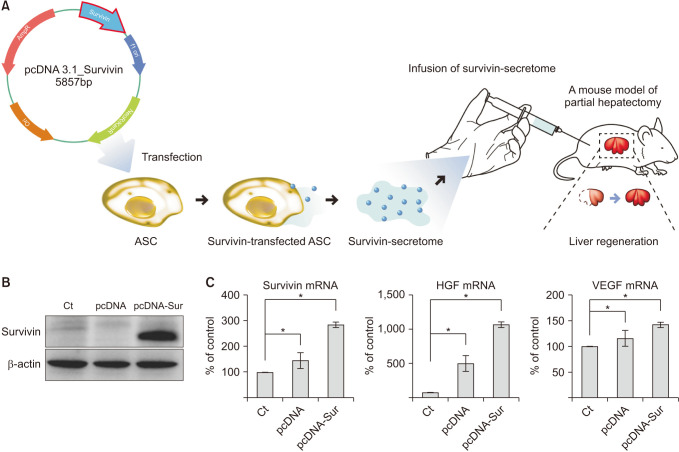
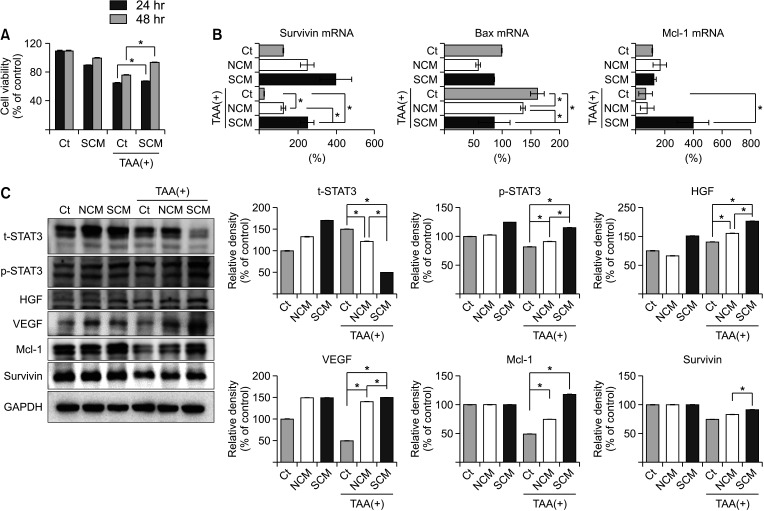
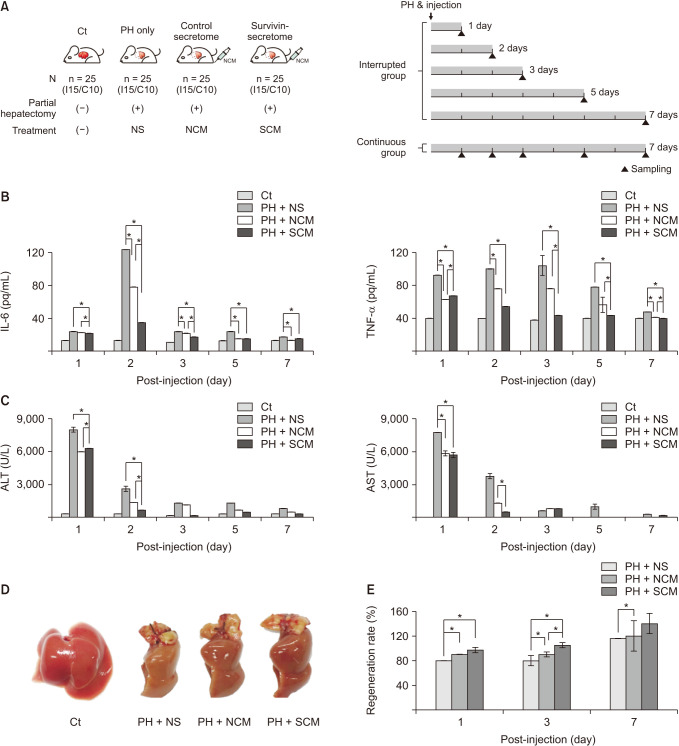
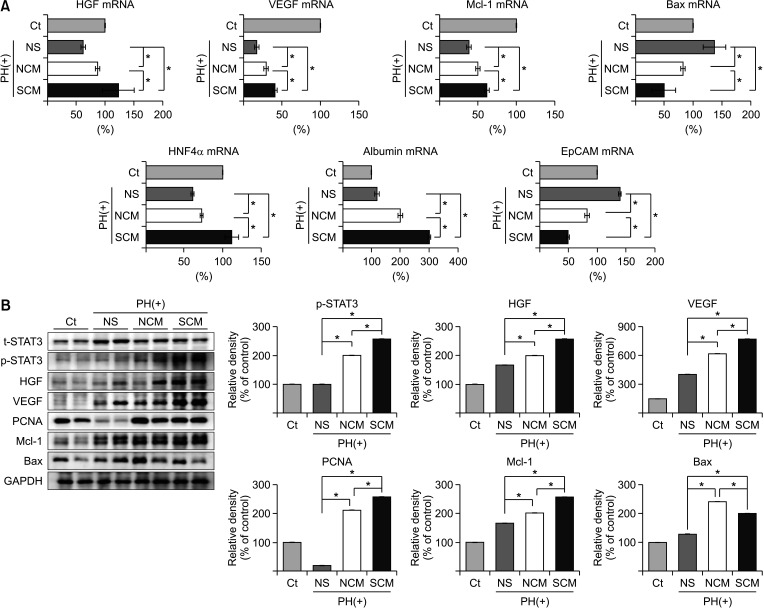
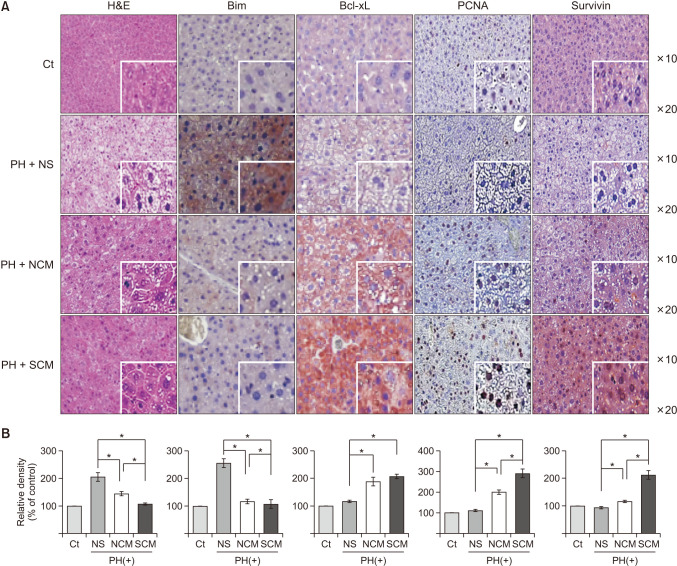




 PDF
PDF Citation
Citation Print
Print



 XML Download
XML Download